Holly care and growing guide: introduce these shrubs and trees to your yard
Holly isn't just for Christmas – these plants can provide interest all year round

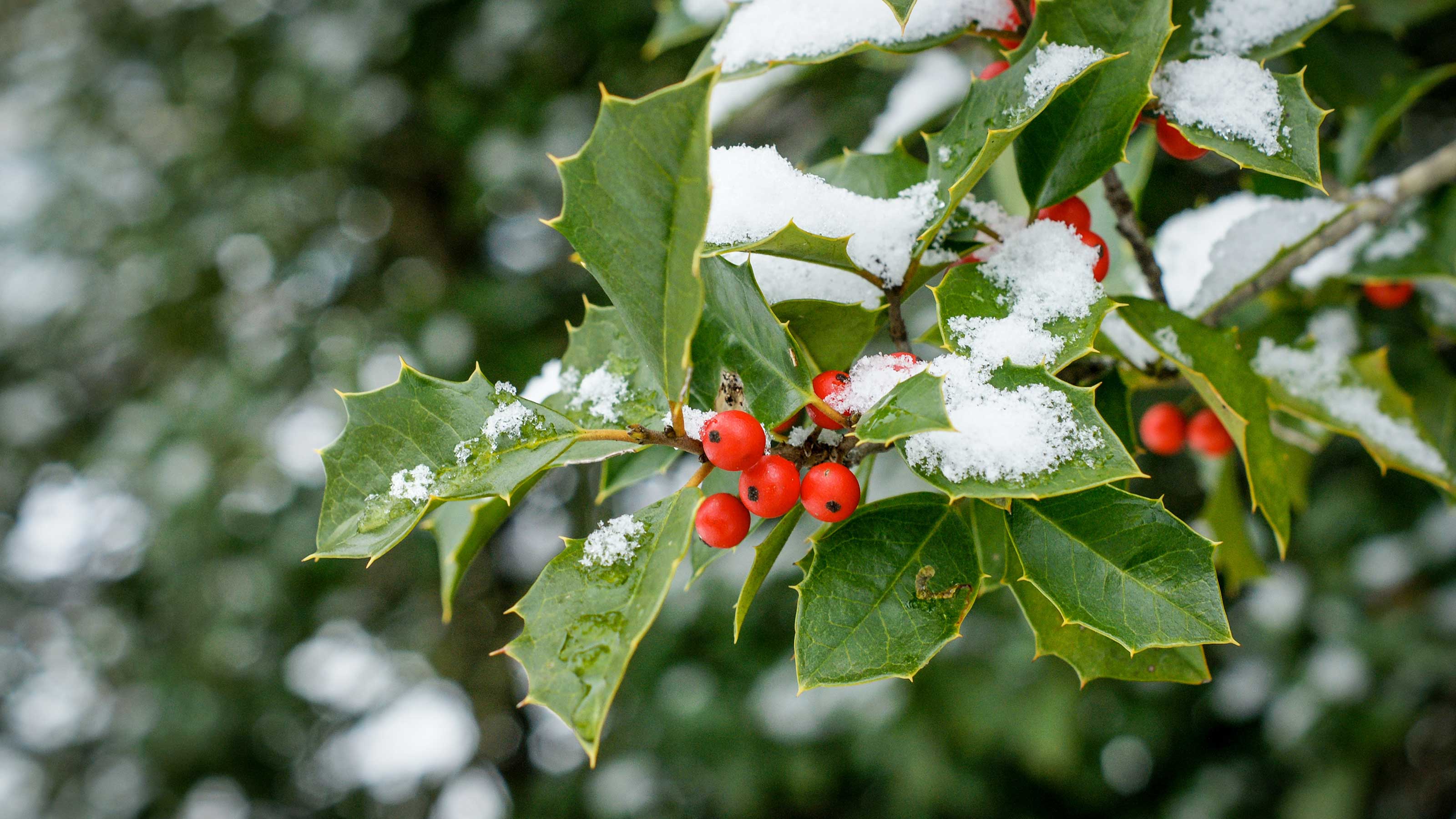
'Hollies are enjoying a peak of popularity as gardeners wake up to their huge diversity of form and fruit and marvel at their adaptability…,' says Christopher Bailes, author of Hollies For Gardeners.
They are a large and unexpectedly varied group of deciduous and evergreen shrubs or small trees that are native to a wide variety of climates. They are grown for their often prolific crop of usually red berries and for their colorful leaves. Evergreen hollies feature bold dark leaves or leaves in a variety of pretty leaf patterns, while the leaves of deciduous hollies often turn yellow in the fall.
Hollies are mostly tolerant and adaptable plants that will grow in a range of garden situations and suffer from few damaging pests or diseases. And, although their flowers are small, the foliage and fruits more than compensate.
There is one unusual feature of hollies, one that can lead to great disappointment unless gardeners keep it in mind when choosing: individual holly plants are either male or female. Only female varieties will produce berries – but a male is needed to provide pollen for fertilization. So, it is important to plant both male and female hollies to be sure of berries.
- Shop hollies in the US: view at Nature Hills
- Shop hollies in the UK: view at Crocus
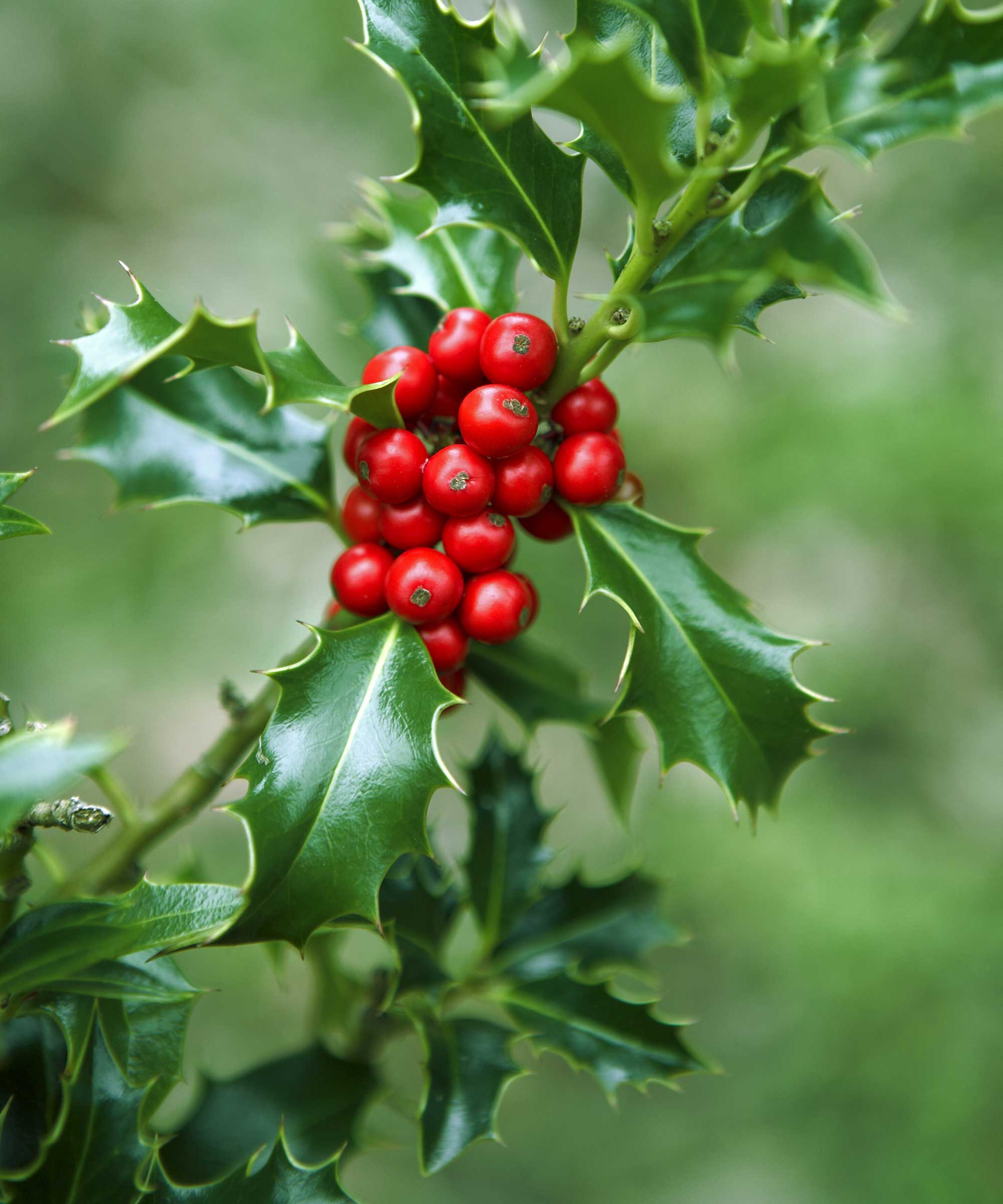
Holly shrubs and trees: key facts
- Plant type: Evergreen and deciduous shrubs and small trees
- Mature size: 6-30ft (2-9m)
- Soil type: Any reasonable soil that is neither parched nor waterlogged
- Soil pH: Slightly acid, neutral, or slightly alkaline
- Time to plant: Spring or fall
- Flowering time: Spring or early summer
- Flower color: Greenish yellow or white
- Fruit color: Red, orange, yellow, white, or black
- Hardiness zones: USDA Z3-9 (UK H5-7)
- Scientific name: Ilex
- Common name: Holly
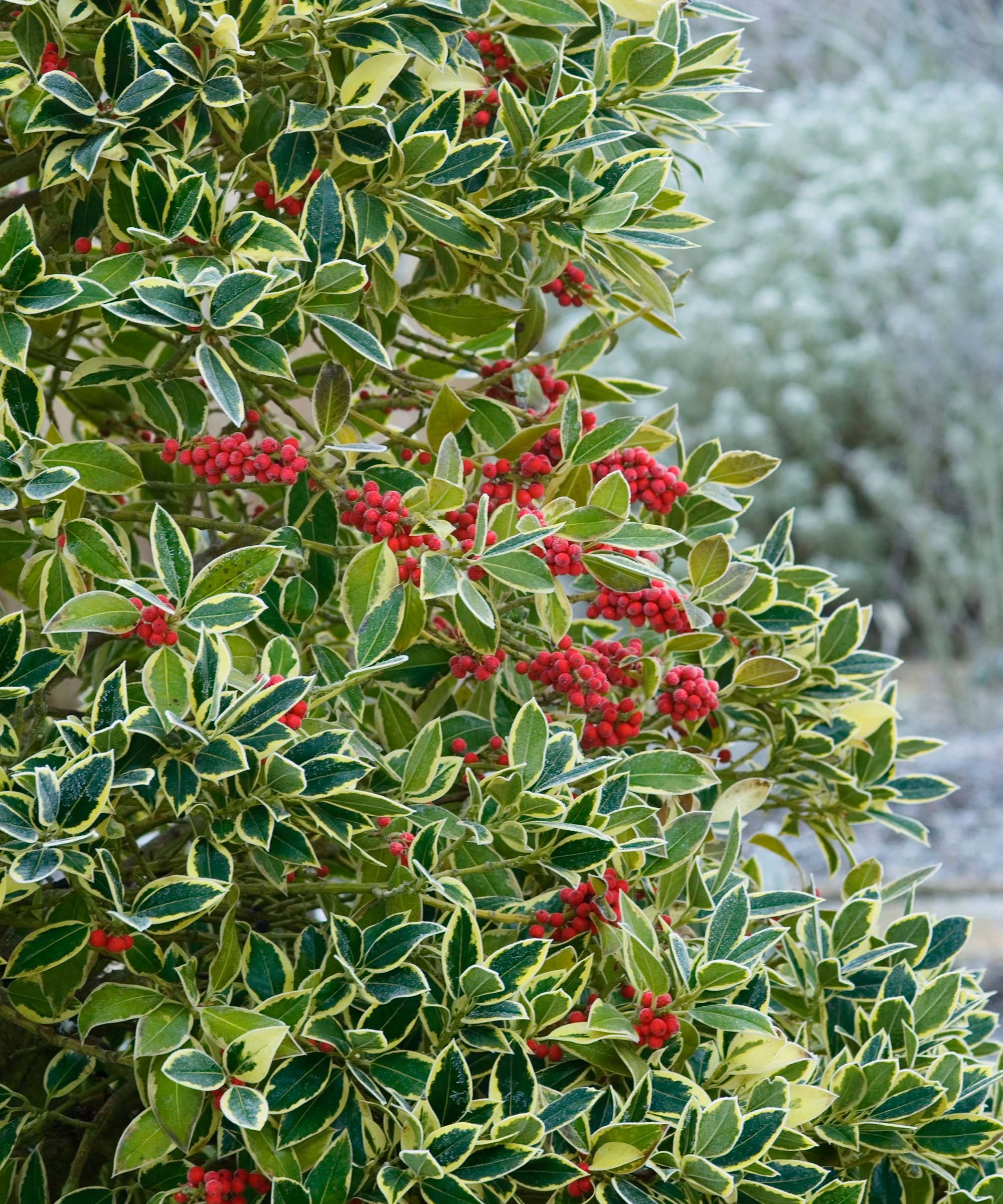
Types of hollies
There are a few key varieties of holly to consider for your backyard.
- American holly (Ilex opaca): Native in the east and south, from New York south to Texas and Florida, this small olive-colored evergreen makes an attractive tree with red winter berries.
- English holly (Ilex aquifolium): 'English holly is a better ornamental tree than American holly (Ilex opaca),' say the experts at the Missouri Botanic Garden, 'but it has less winter hardiness and is more difficult to grow in the lower Midwest and deep South… Foliage and fruit provide good color for the winter landscape.' Most have spiny leaves. The Highclere holly (Ilex x altaclerensis) is similar.
- Winterberry (Ilex verticillata): 'Heavy berry production for brilliant winter color. Winterberry produces copious amounts of bright red berries that really shine in the fall and winter landscape,' say the experts at Proven Winners. It is native to the northeast, Midwest and south from Quebec to Texas.
- Japanese holly (Ilex crenata): A slow-growing, very small-leaved evergreen with black berries and, often, prettily patterned foliage. Excellent as a low hedging plant, and also for small topiary. 'The Japanese holly and several of its many cultivars are amongst our most useful evergreen shrubs,' says Louise and James Bush-Brown in their classic America’s Garden Book.
- Blue holly (Ilex x meservae): A little like a more compact, winter-hardy version of an English holly with dark, blue-tinted, evergreen leaves and red winter berries. Most are spiny.
- Chinese holly (Ilex cornuta): This very tough evergreen carries a profusion of glistening red berries. Michael Dirr says in Dirr’s Trees and Shrubs for Warm Climates: '…for hot dry areas of the country, this evergreen large shrub would rank in the top five safe choices.'
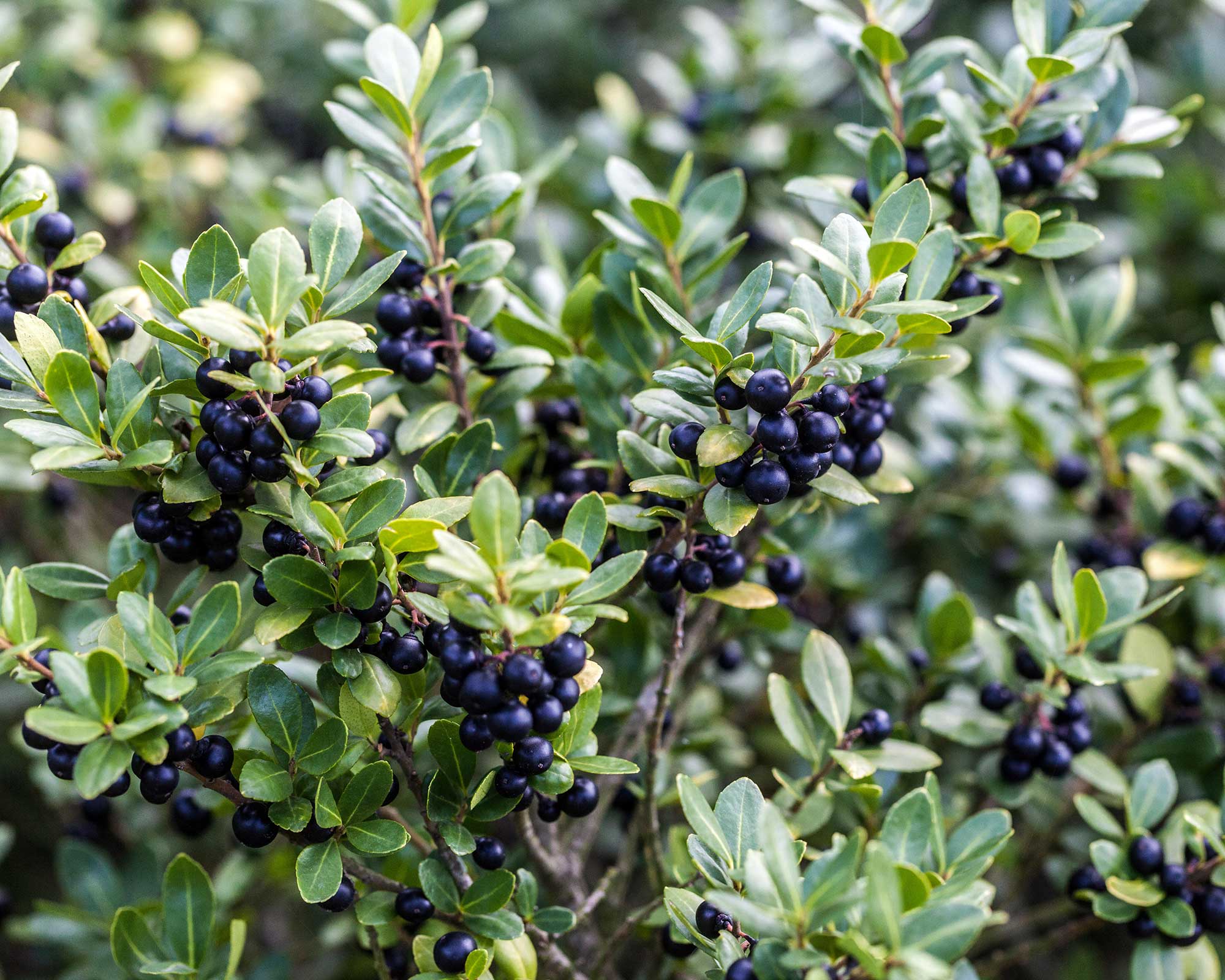
If you are looking for a particularly striking shrub with berries, the deciduous winterberry, with scarlet or gold berries, shows its prolific crop best. Black-berried evergreen Japanese holly is the least effective while the mix of patterned foliage and red or yellow berries is a feature of English holly, Highclere holly and American holly.
The berries of all hollies are distasteful to birds as they first ripen, but lose the unpleasant taste as the weeks go by – so they last unusually well.
If you want a variety with interesting foliage, deciduous winterberry's leaves turn yellow in fall. And there are many variegated varieties of evergreen English holly and the closely related, but more vigorous, Highclere holly. The leaves may be edged or splashed in shades of white, cream or bright yellow for all-year-round color. With the bright winter berries, they make a splendid sight. Blue-leaved hollies have a blue tinge to the leaves, while some Japanese hollies are olive-tinted or grayish and may be prettily tinted in red in spring.
If you want to create structural impact with your planting pick, a large English holly or Highclere holly in fruit in the fall and winter is a dramatic sight. However, these evergreens do not thrive across the whole country. In warm, challenging climates try ‘Nellie R. Stevens’.
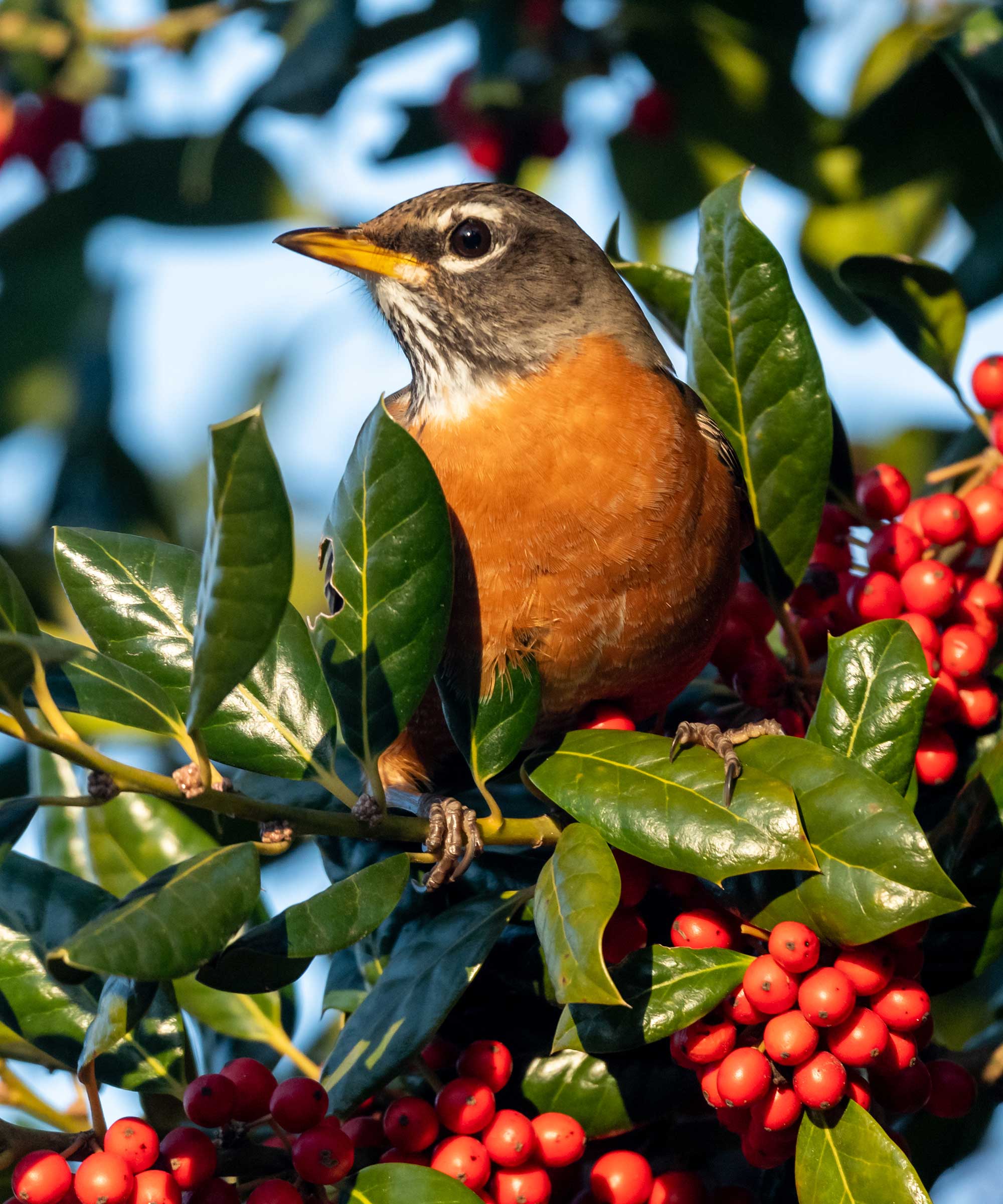
Where to plant hollies
Hollies fall into two groups, and each has different qualities and different needs.
The evergreen hollies – including the European native English holly and similar plants – prefer milder conditions. They are hardy to USDA Z6-9 (UK H6) and dislike extremes of heat and cold. This group is happy in limey and neutral conditions, and in slightly acid conditions with a good depth of soil.
The other group of both deciduous and evergreen hollies, including the American native deciduous winterberry, is much hardier, USDA Z3-9 (UK H7), and much more tolerant of both summer heat and winter cold. This group tends to be happiest in acid soil types.
In general, most hollies will grow in most conditions but both groups hate waterlogged soil. The lesson from this is that there are hollies for most parts of the country and for most garden situations.
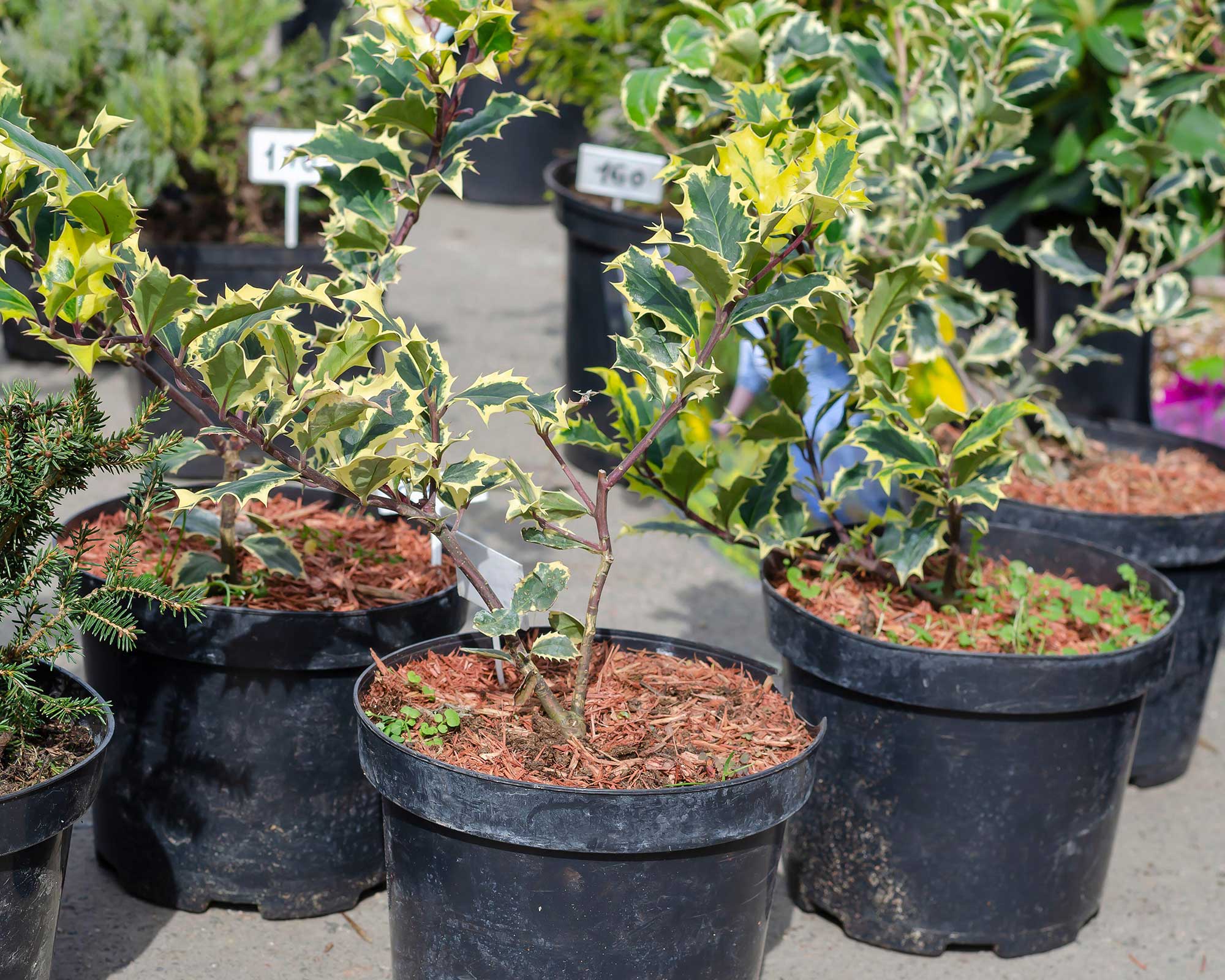
How to plant hollies
Hollies are best planted in early to late fall, although in colder areas it often pays to wait until early spring when the soil has first thawed. In mild areas, planting can continue until late spring but it is important to take special care to ensure the roots do not dry out.
Prepare the ground thoroughly, but be sure not to dig your planting hole and then replace all the garden soil with soil improver, garden compost or potting mix. Instead, mix the existing garden soil with no more than 50% compost.
Soak the roots of your new holly thoroughly before planting, and plant so that the soil in the container is level with the surrounding garden soil. Then mulch with 2in (5cm) of bark or other weed-free organic material. Taller growing varieties, especially evergreens, will need secure support – make sure a stake is in place when planting. Irrigate thoroughly.
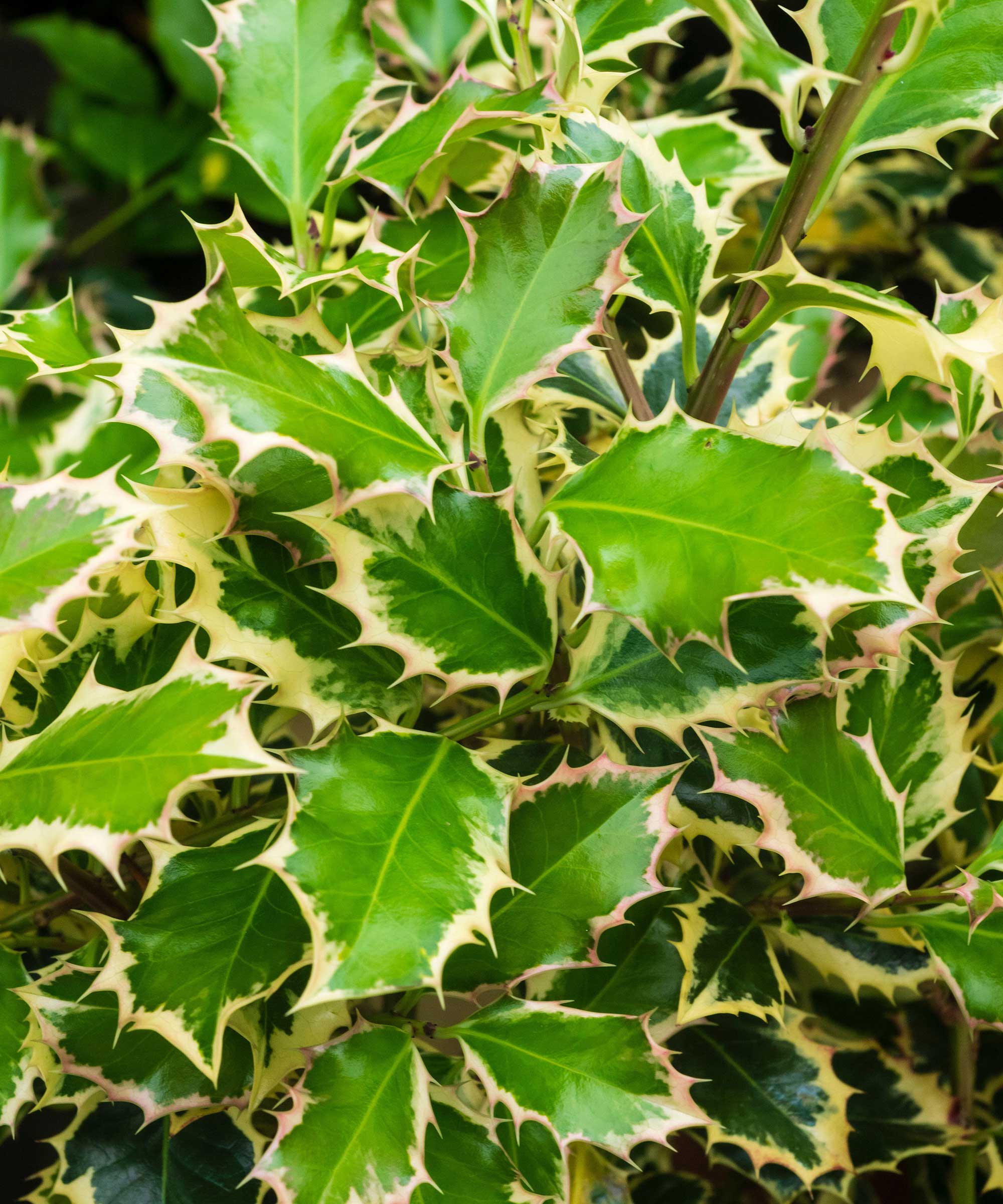
Holly care tips
The two most important items of holly aftercare are to prevent the roots of your new holly from drying out – especially in its first year after planting – and to ensure that larger growing evergreen hollies remain secured to their stakes and are well supported. Check, too, that the holly branches do not rub against each other.
Mulching not only helps ensure that the rooting area retains moisture but also inhibits weed growth. All hollies benefit from annual feeding in spring and Holly-tone, available on Amazon, or another shrub fertilizer intended for lime-hating plants is ideal.
Hollies can be clipped into a hedge or formal shape. Or, you can allow them to grow informally, in which case pruning hollies will be to improve the shape of the plant and is best done in summer.
Overgrown hollies can be cut back hard in spring, but it is crucial that the plants do not dry out in their first season after this severe treatment otherwise growth will be poor.
Hollies in containers should never be allowed to dry out and should be fed regularly during the growing season.
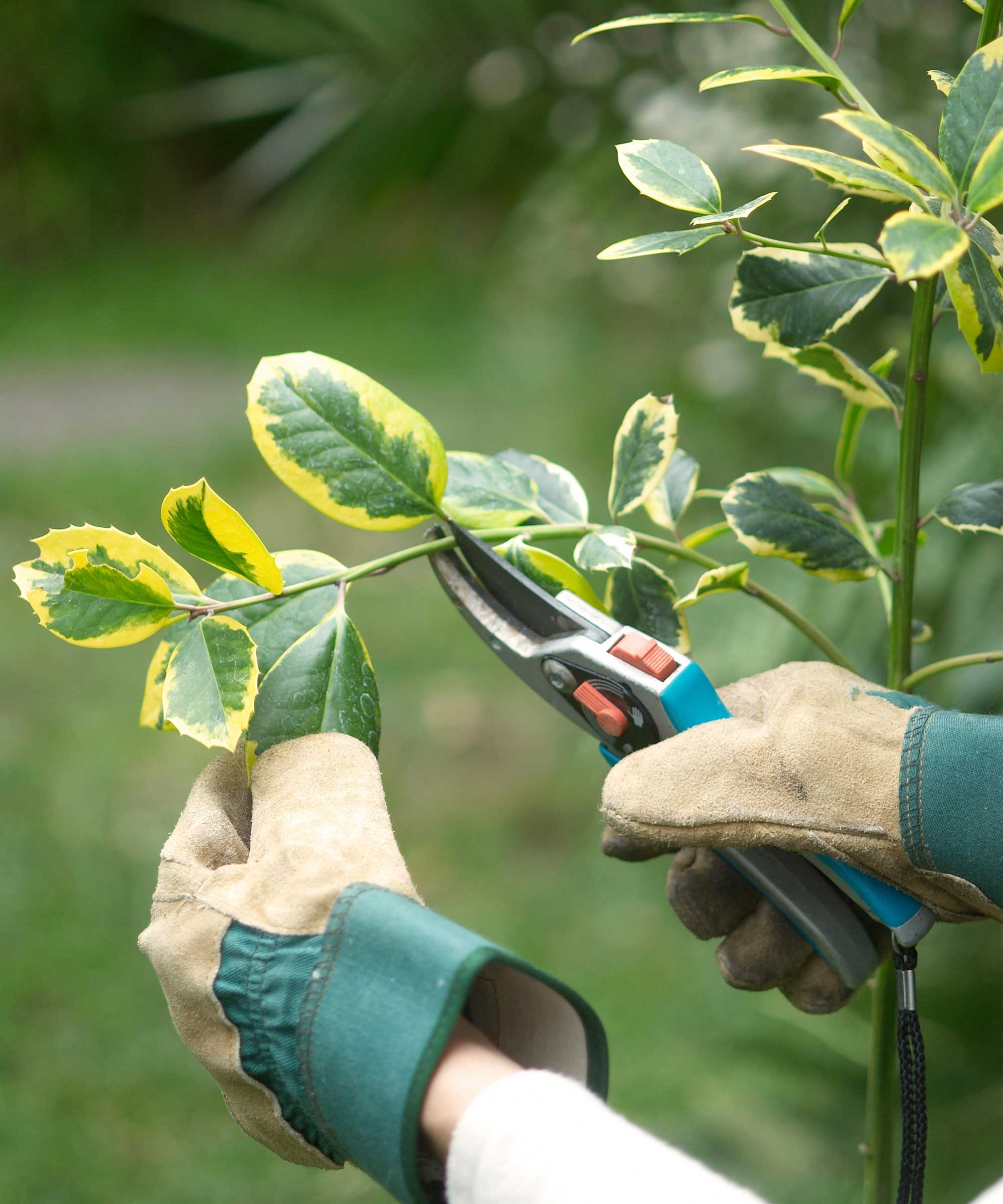
How to make more hollies
If your holly delights you with fall fruits then, after they have been eaten by birds and excreted, holly seedlings will usually pop up around the garden. These can be transplanted to a more convenient place to develop and then moved to an appropriate site.
Be aware, however, that your new seedling plants may not turn out to be exactly the same as the plant from which the berry came.
The other way to propagate hollies is to take cuttings:
- Both deciduous and evergreen hollies can be propagated using 4-6in (10-15cm) cuttings. Take cuttings of evergreens in mid-late summer, and deciduous varieties in early summer.
- Tidy the cuttings by snipping just below the lowest leaves, then snip off the leaves from the lower half of the cutting.
- Dip the base of each cutting in rooting gel or rooting powder (available on Amazon), and gently push into 5-6in (12-15cm) diameter pots of seed starting mix up to the lower leaves.
- Water well and place in a propagator in a cool, bright place. Keep moist, then move the cuttings into individual pots when roots emerge from the base of the pot.
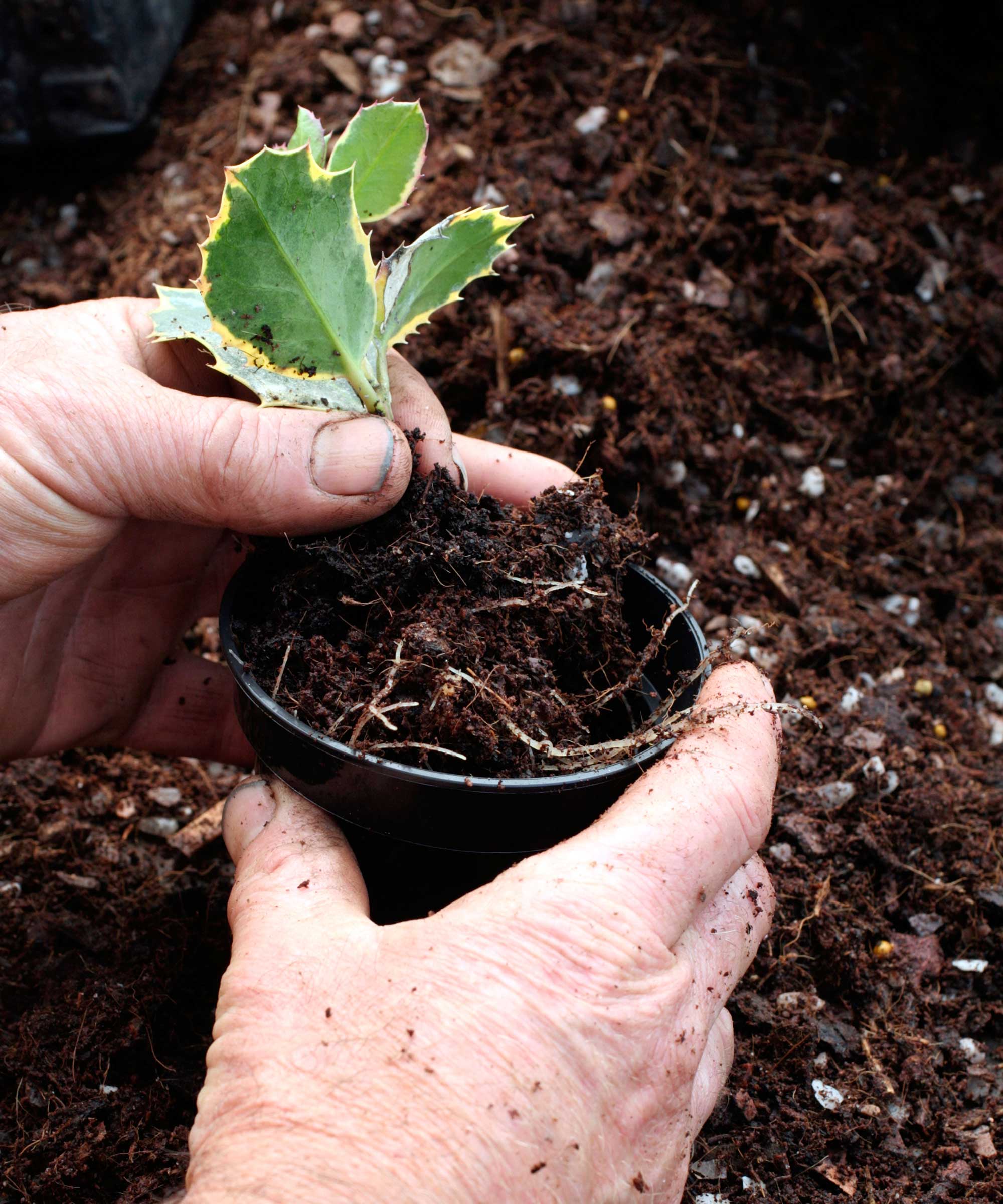
Solving problems with hollies
Hollies are troubled by few serious pests or diseases and, as in so many cases, well-grown plants suffer far less than those planted in unsuitable situations and not looked after.
Many hollies are not deer-resistant plants, so fence protection or a deterrent will be necessary if deer are seen in your area. Rabbits, gophers and other critters can also cause problems eating shoots and stems. Regulations covering how to deal with such creatures may vary from state to state. Leaf miners are tiny caterpillars that tunnel just under the leaf surface creating a network of small disfiguring tunnels: these create more blemish than harm.
Leaf blotches and mildews rarely pose serious problems and are more damaging on plants that are growing poorly and generally unhealthy. Holly blight, however, can be more serious, especially in damp climates, as the lower leaves turn black and drop off. Prevention is the only cure. Check over holly plants before buying and, if the problem arises later, clear away and burn all fallen leaves and remove the mulch as it may harbor disease spores.
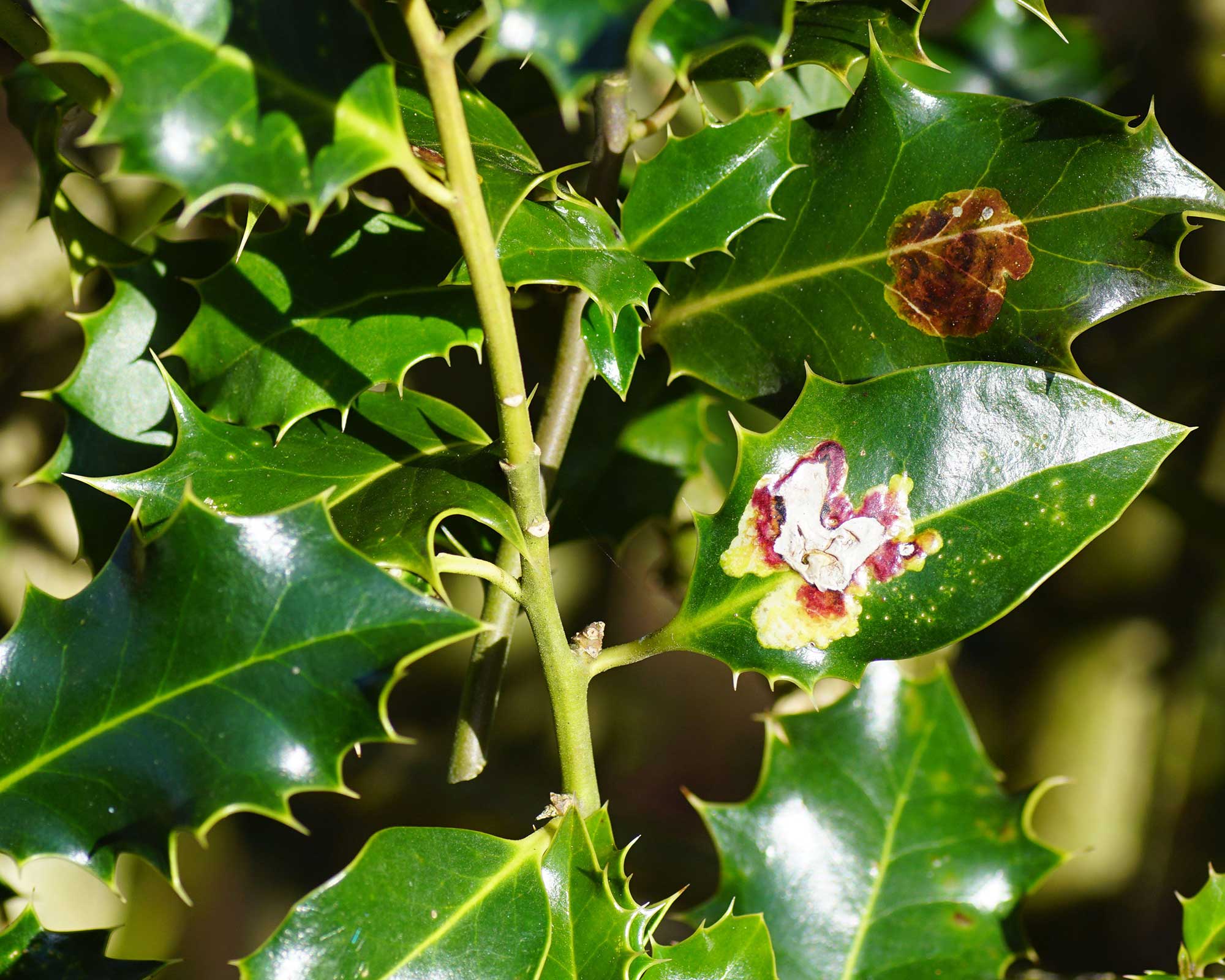
Are there any evergreen hollies without spines?
Firstly, if you look at a mature English holly you will often find that the lower branches carry spiny leaves but, higher up and out of the reach of browsing animals, the leaves lose their spines.
Many hollies have leaves with small teeth, far from the vicious spines of some, but there are also a few evergreen holly varieties that have few or no spines – thus better choices for child-friendly gardens (just ensure they don't eat the toxic berries). The outstanding example is ‘J. C. van Tol’. This is an English holly that rarely has any spines on its foliage. ‘Camelliifolia’ is similar.
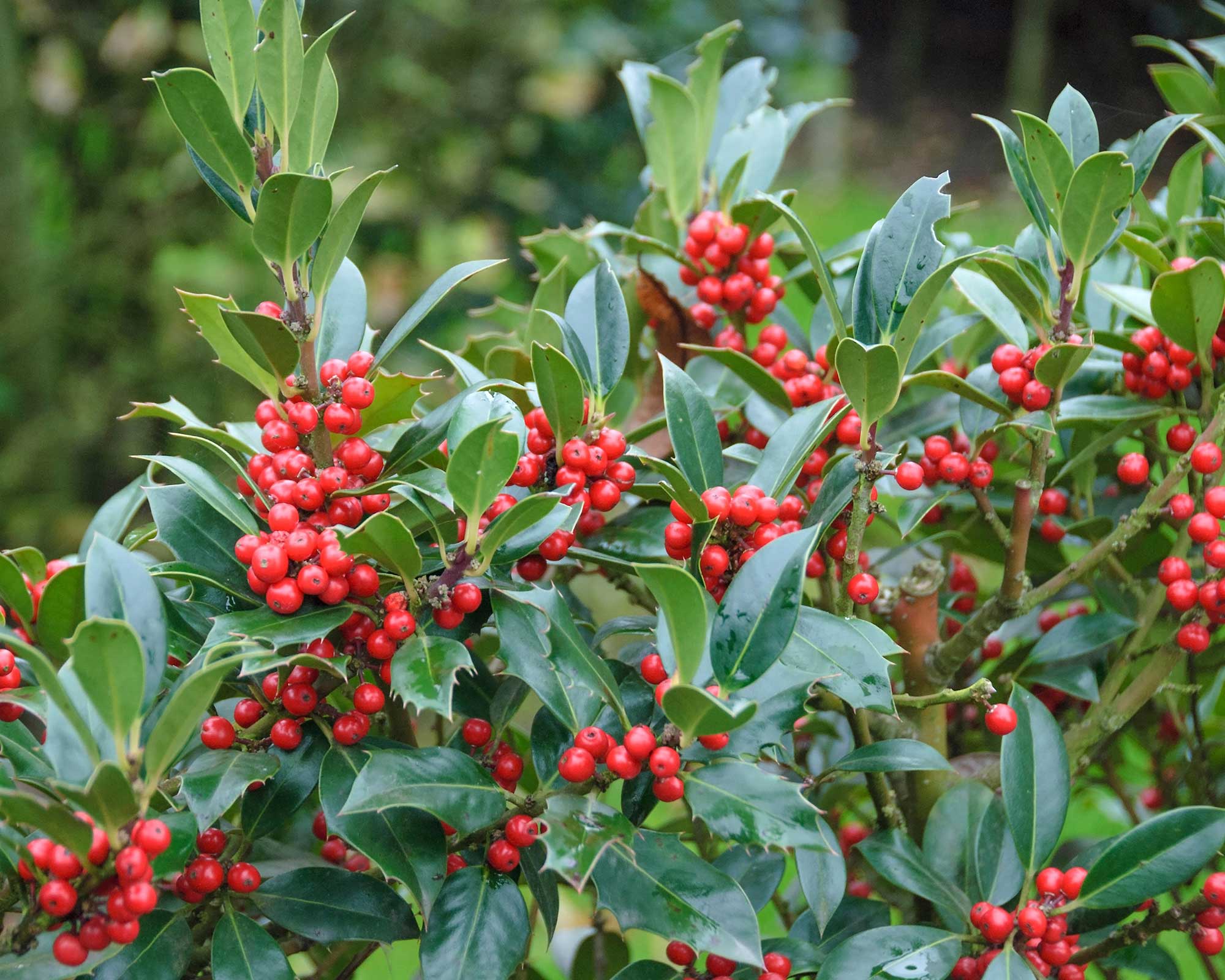
Are there any hollies that produce berries without a male plant nearby?
Yes, one variety in particular: ‘J. C. van Tol’, is well known, and widely grown, for its ability to produce a generous crop of red berries without a male plant nearby. As mentioned above, the leaves are also almost entirely spine-free, making it an ideal garden variety, although it is strong growing and can reach 16.5ft (5m) in height.
There is also a variegated version, ‘Golden van Tol’, with golden margins to its dark green leaves.
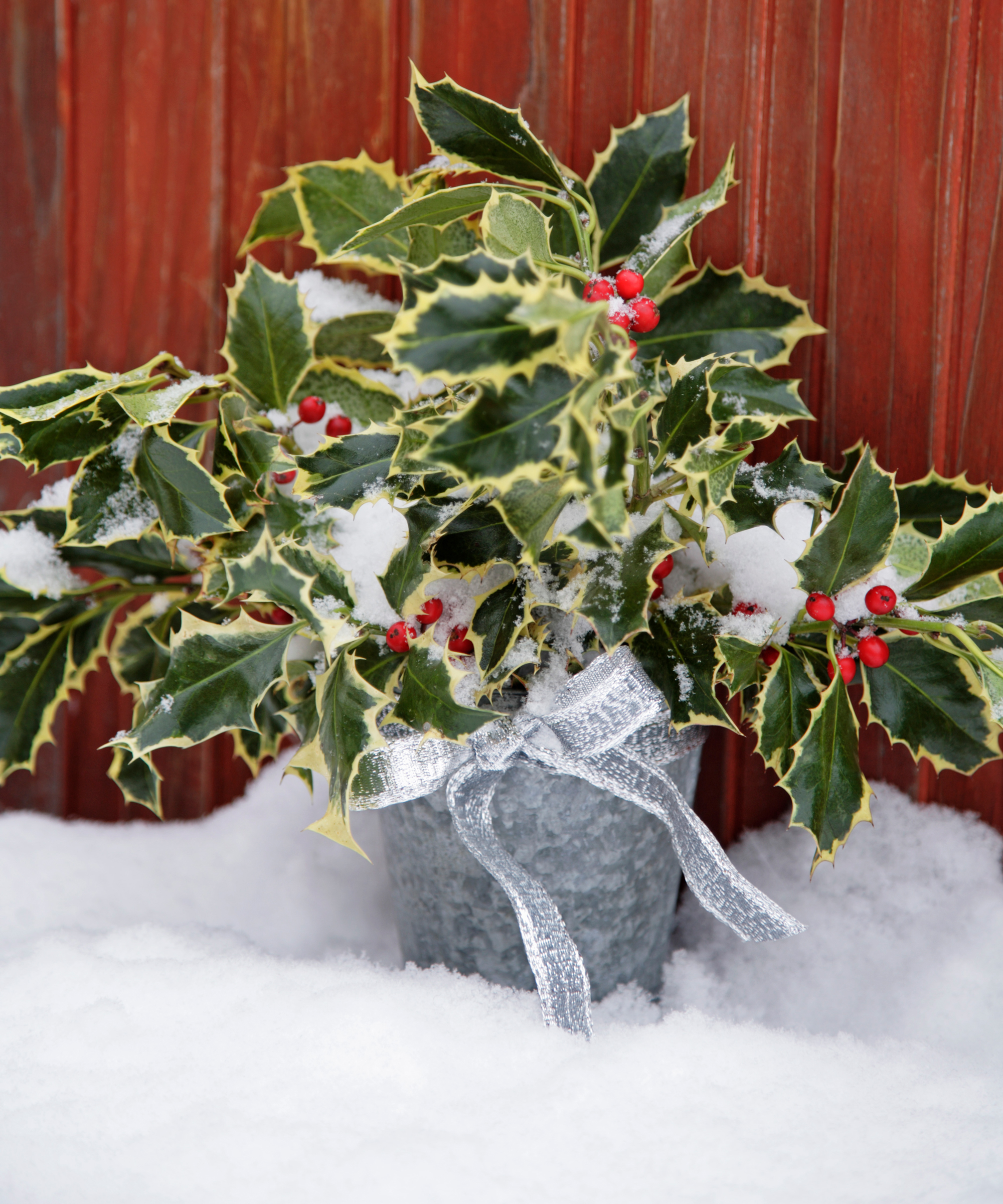
Can you grow a holly in a container?
Yes, hollies grow well as part of a container garden, and make attractive specimens for the deck or patio. But, there are some important points to remember. Firstly, it is not wise to plant spiny varieties where people, especially children, often pass by.
Secondly, a holly in a prominent position needs to provide value all year round so a variegated evergreen is ideal. Avoid vigorous varieties and prevent waterlogging by standing the pots on pot feet to ensure good drainage.
Varieties of Japanese holly (Ilex crenata) are ideal. ‘Drops of Gold’ has vivid gold shoot tips, ‘Golden Gem’ has yellow-splashed leaves on red stems, ‘Fastigiata’ and ‘Sky Pencil’ have tall and very slender growth, while the rounded growth of ‘Soft Touch’ is similar to boxwood.
Are any hollies deer resistant?
A few hollies are rated as 'Rarely Damaged', the highest category of deer resistance, as assessed by The New Jersey Agricultural Experiment Station. They gather research from a wide range of horticultural experts and rate plants in four categories from 'Rarely Damaged' to 'Frequently Severely Damaged'.
The American holly is rated as 'Rarely Damaged'. More, including Chinese holly, English holly and Winterberry holly fall into the 'Seldom Severely Damaged' category.
Blue holly and Japanese holly fall into the more worrying 'Occasionally Severely Damaged' but none are categorized as 'Frequently Severely Damaged'.
How to buy holly plants
Both evergreen and deciduous hollies are offered by retailers in the fall, showing off their sparkling, jewel-like fruits. These will be female plants – if there are no male plants offered alongside, shop somewhere else as they clearly know nothing about hollies! Check the tags of any holly plants on display that have no berries and it should be stated that they are male.
Variegated evergreen hollies are often presented all year as they are always very colorful. Plants with variegated leaves and red berries are especially attractive but beware of the spines, which are often very sharp.
Hollies are sold in walk-in nurseries in containers, or balled-and-burlapped with plenty of soil on the roots. If they are offered bare root (with the soil shaken off the roots) leave them in the nursery.
Mail order, plants are available in sizes from tubes to five-gallon pots, sometimes larger, although the larger sizes are not only more expensive but also more costly to ship.


Graham Rice is a garden writer who has won awards for his work online, and in books and magazines, on both sides of the Atlantic. He is a member of a number of Royal Horticultural Society committees and the recipient of the 2021 Garden Media Guild Lifetime Achievement Award.
